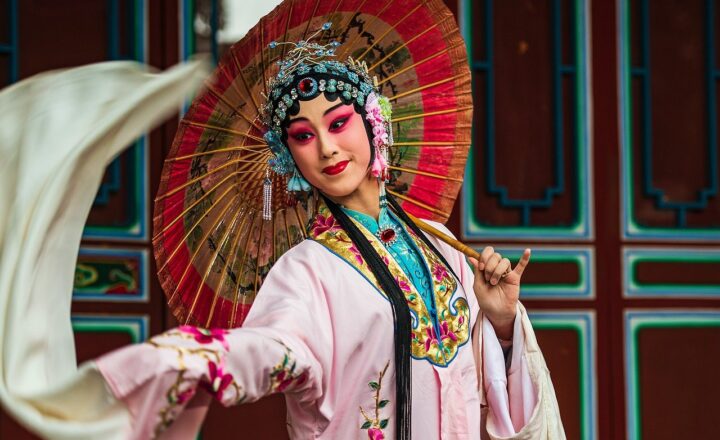Exploring the Meaning Behind Traditional Clothing Around the World
November 13, 2024

Traditional clothing serves as a significant emblem of culture, identity, and heritage across various societies. From the intricate designs of a kimono in Japan to the vibrant patterns of an African kente cloth, these garments tell stories of ancestry, tradition, and belonging. In this article, we will delve into the various forms of traditional clothing across the globe, their meanings, cultural significance, and how they continue to influence modern fashion.
1. Understanding Traditional Clothing
Traditional clothing refers to the garments that are specific to a particular culture or region. These clothes often embody historical influences, religious sentiments, and social customs. They are made using techniques passed down through generations, showcasing the unique craftsmanship of different societies.
Traditional attire goes beyond mere aesthetics; it is closely intertwined with the cultural identity of the people wearing it. It often serves vital functions, such as:
- Cultural Representation: Traditional clothing is a powerful form of expression, showcasing the cultural narratives and historical journeys of a community.
- Ritual Significance: Many traditional garments are worn during special ceremonies, such as weddings, religious events, or festivals, adding layers of meaning and significance.
- Social Status Indicators: Clothing can symbolize social status, ethnicity, and regional affiliation, helping to distinguish individuals within a communal framework.
Understanding traditional clothing is crucial as we look at an increasingly globalized world where fashion trends often overlap and blend. Let’s journey through different regions and discover the rich tapestry of traditional wear and their meanings.
2. Notable Examples of Traditional Clothing
2.1 Asia: The Kimono
The Kimono, a traditional Japanese garment, is renowned for its elegance and intricate designs. Made from beautiful silk fabrics adorned with elaborate patterns, each kimono tells a story and reflects the wearer’s social standing and the occasion.
Key elements include:
- Seasonal Variations: Different kimonos are worn during different seasons, often incorporating colors reflective of nature’s changes.
- Symbolism: Patterns symbolize everything from family crests to auspicious omens, embedding deeper cultural meanings in the garment.
- Worn on Special Occasions: Kimonos are often worn during significant events, such as tea ceremonies, weddings, and festivals, highlighting their cultural importance.
2.2 Africa: Kente Cloth
Kente cloth is a brightly colored, handwoven textile that originates from Ghana. Known for its vibrant colors and symbolic patterns, kente is more than just clothing; it is a representation of history and identity.
Key points include:
- Symbolic Patterns: Each design has its own meaning, often reflecting proverbs, historical events, or moral values that are important to the community.
- Ceremonial Use: Kente is traditionally worn during significant life events, like graduations and weddings, serving as a badge of honor and status.
- Cultural Pride: Wearing Kente cloth today continues to evoke a sense of pride in Ghanaian heritage and culture, bridging the old with modern identity.
2.3 North America: Native American Regalia
Native American clothing varies by tribe but often features intricate beadwork, feathers, and other elements that hold deep cultural significance. Each piece of regalia worn during ceremonies holds stories of ancestors, heritage, and spiritual connections.
Points of interest include:
- Identity and Culture: Traditional regalia represents the identity of individual tribes and reveals deep connections to their histories.
- Cerembadra Ceremony Use: Clothes are often worn during ceremonies like the powwow or healing rituals, where they symbolize respect for ancestors and traditions.
2.4 Europe: The Scottish Kilt
The Scottish kilt is a knee-length skirt-like garment originating from traditional Scottish attire. Made from woolen cloth, it features distinctive tartan patterns, which represent different clans and their heritages.
Key aspects include:
- Clan Representation: The tartan pattern indicates the wearer’s clan, making it a significant marker of identity.
- Ceremonial Role: Worn during formal events and festivals, kilts showcase pride in Scottish heritage.
- Cultural Revival: In recent years, the kilt has seen a resurgence, adopted beyond traditional settings and into modern fashion.
3. The Evolution and Influence of Traditional Clothing
While traditional clothing is steeped in history, it must also adapt to contemporary influences. This evolution occurs through:
- Cultural Exchange: As globalization progresses, traditional attire often blends with modern fashion trends, leading to innovative designs.
- Fashion Industry Influence: Designers frequently draw inspiration from traditional clothing, showcasing it on international runways and infusing it into contemporary designs.
- Sustainable Fashion Movement: Traditional craftsmanship practices are being embraced in the sustainable fashion movement, promoting ethical production and honoring cultural heritage.
4. Preserving and Celebrating Traditional Clothing
As globalization threatens the uniqueness of traditional clothing, efforts to preserve these garments are vital. Strategies include:
- Cultural Education: Teaching about traditional attire in schools and communities promotes appreciation and respect for cultural heritage.
- Fashion Festivals: Events celebrating cultural garments help raise awareness and appreciation, bringing together artisans and communities to showcase their crafts.
- Support for Artisans: Encouraging local artisans and businesses that produce traditional clothing to thrive ensures longevity for these crafts.
5. Conclusion
Exploring traditional clothing provides a window into the rich cultural narratives of societies worldwide. These garments are not just fabric but embodiments of identity, history, and meaning. As we appreciate these traditional wears, we also pave the way for future generations to honor their cultural heritage while navigating a globalized world.
In embracing both tradition and modernity, we enrich our lives and maintain the vibrant diversity that makes our world beautiful. Together, let’s appreciate traditional clothing as a vital expression of our collective humanity, ensuring these stories continue to be told for generations to come.








